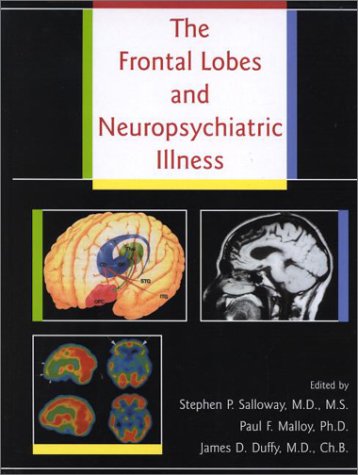(Ebook) The Frontal Lobes and Neuropsychiatric Illness by Stephen, M.D. Salloway, Paul F. Malloy, James D. Duffy ISBN 9780880488006, 9781585628032, 088048800X, 1585628034
This exciting volume brings together the latest work of 26 recognized experts in clinical neuropsychiatry, neuropsychology, neuroscience, and neuroimaging. Its chapters are organized into sections that cover a broad range of topics related to advances in our understanding of normal and abnormal frontal lobe functions. -Part 1 introduces frontal lobe dysfunction as a common pathway leading to social and occupational disability, arguing that our aging population with its decline in executive cognitive abilities mandates corresponding eligibility and treatment changes in public and private health disability policies. -Part 2 delineates the anatomy and neurochemistry of the extended frontal systems underlying neuropsychiatric illness, including colorful illustrations of three key prefrontal-subcortical circuits; a description of the functional anatomy of the orbitofrontal cortex and its relationship to obsessive-compulsive disorder (OCD); the intricate pharmacology of working memory systems and how they apply to schizophrenia; the lateralization of prefrontal cognitive functions; and a framework for understanding the role played by the prefrontal cortex in consciousness and self-awareness. -Part 3 clarifies the overused diagnosis Afrontal lobe syndromeA seen in clinical practice, identifying three prefrontal syndromes for further studyAdorsolateral dysexecutive syndrome, orbitofrontal disinhibited syndrome, and mesial frontal apathetic syndromeAthat align with the anatomical systems described in Part 2 of this volume. Also included are common problemsAand suggested solutionsAin diagnosis and treatment, a practical overview of the assessment of frontal lobe functions with guidelines for bedside and formal neuropsychological examination, and comprehensive treatment strategies. -Part 4 covers the role of the frontal lobes in major neuropsychiatric illnesses, discussing evidence that shows prefrontal and anterior temporal hypometabolism in primary and secondary depression; reviewing anatomical, imaging, and neurochemical studies in schizophrenia; describing the neuropsychological and neuropsychiatric sequelae of closed head injury; summarizing the neurological substrates related to interesting and often dramatic cases of content-specific delusions; and concluding with a report on the stereotactic neurosurgical treatment of refractory OCD and its implications for understanding frontal lobe function. This remarkable work is intended for psychiatrists, neurologists, psychologists, basic and clinical neuroscientists, and trainees from each of these disciplines, who will welcome it as a valuable tool in understanding the complexities of what was once considered the terra incognita of the brain.
*Free conversion of into popular formats such as PDF, DOCX, DOC, AZW, EPUB, and MOBI after payment.


